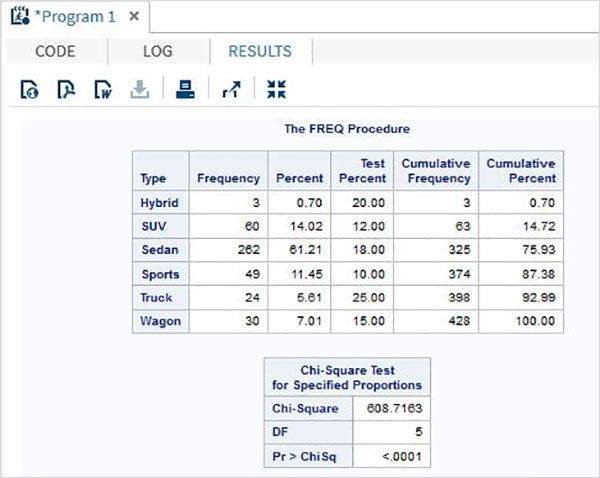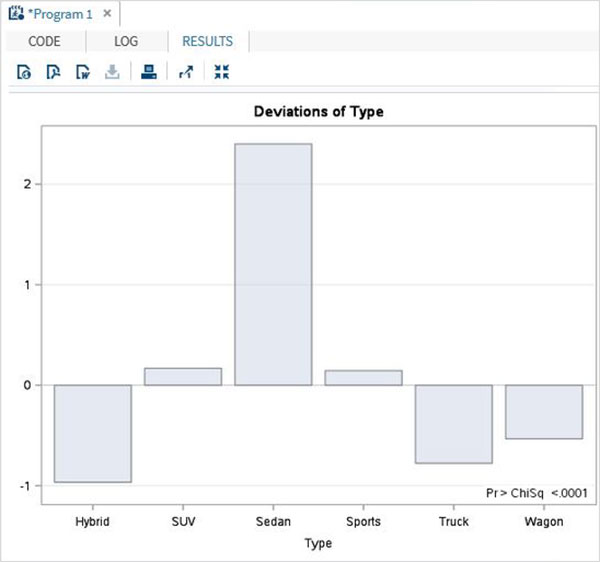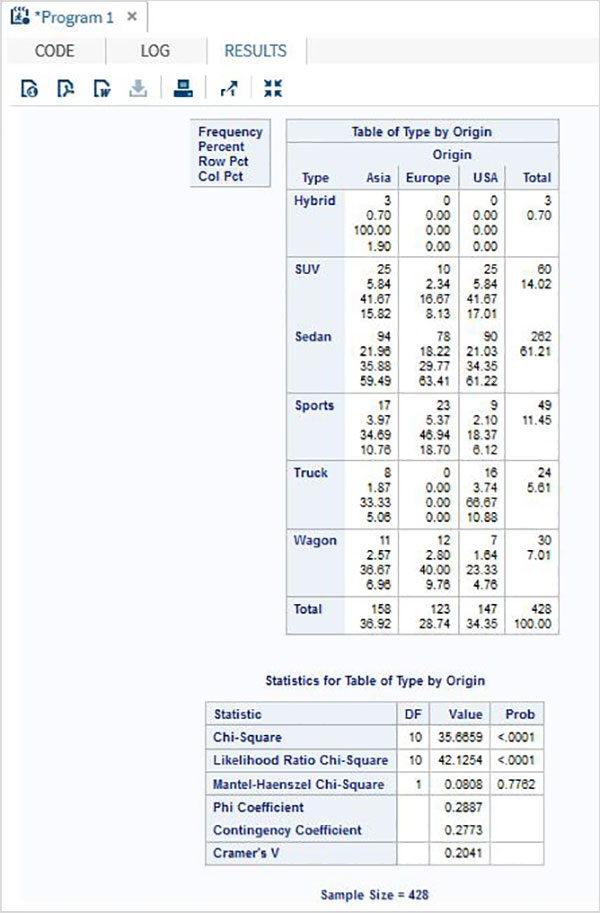SAS card side
May 27, 2021 SAS
Table of contents
The box-side test is used to verify the association between two classification variables. I t can be used to test the degree of dependency and independence of variables. S AS uses the PROC FREQ and chisq options to determine the results of the card side test.
Syntactic
The basic syntax for applying PROC FREQ to card-side testing in SAS is:
PROC FREQ DATA = dataset; TABLES variables /CHISQ TESTP=(percentage values);
The following is a description of the parameters used:
- Dataset is the name of the dataset.
- A variable is the variable name of the dataset used in the box square test.
- The value in the percentage TESTP statement represents the percentage of the level of the variable.
Cases
In the following example, we consider SASHELP for the dataset. T he variable named type in CARS is checked by the card side. T he variable has six levels, and we assign percentages to each level based on the design of the test.
proc freq data = sashelp.cars; tables type /chisq testp=(0.20 0.12 0.18 0.10 0.25 0.15); run;
When we execute the code above, we get the following results:

We also get a bar chart showing the deviation of the variable type, as shown below.

Two-way card side
When we apply a test to two variables in a dataset, we use a two-way card square test.
Cases
In the following example, we apply a card square test to two variables named type and origin. T he results show the table form of all combinations of these two variables.
proc freq data = sashelp.cars; tables type*origin /chisq ; run;
When we execute the code above, we get the following results:
